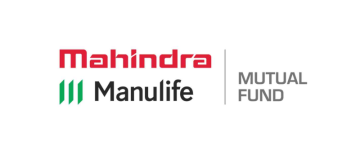Investing in the stock market is one of the most effective ways to build wealth over time. However, the key to successful investing lies in identifying the right companies to invest in—those that offer strong growth potential, financial stability, and long-term value. Whether you are a beginner or an experienced investor, learning how to pick top-performing stocks like a professional can significantly improve your investment returns and reduce risks.
In this comprehensive guide, we will explore proven strategies, analytical techniques, and tools that will empower you to identify top companies in the stock market with confidence and precision.
Why Identifying Top Companies Matters

The stock market is vast, with thousands of companies listed across various sectors and industries. Not all stocks are created equal—some companies have solid fundamentals and growth prospects, while others may be struggling or overvalued. Investing blindly or based on hype can lead to poor returns or losses.
Identifying top companies helps you:
-
Maximize your investment returns by focusing on high-quality stocks.
-
Minimize risk by avoiding financially weak or unstable companies.
-
Build a diversified portfolio aligned with your financial goals.
-
Make informed decisions based on data and analysis rather than emotions.
Step 1: Define Your Investment Goals and Risk Tolerance

Before you start analyzing stocks, it’s crucial to clarify your investment objectives and risk appetite. Your goals will determine the type of companies you should focus on.
-
Long-Term Growth: If your goal is wealth accumulation over years or decades, prioritize companies with strong growth potential.
-
Income Generation: For steady income, look for companies with a history of paying reliable dividends.
-
Capital Preservation: If you want to protect your capital, focus on stable, blue-chip companies with low volatility.
-
Risk Tolerance: Assess how much risk you can handle. Growth stocks often have higher volatility, while value or dividend stocks tend to be more stable.
Knowing your goals helps you filter companies that fit your investment style.
Step 2: Understand Different Investment Strategies

Top investors use a variety of strategies to identify promising stocks. Understanding these approaches will help you choose the best fit for your goals.
-
Growth Investing: Growth investors seek companies with above-average revenue and earnings growth. These companies often reinvest profits to expand operations and may not pay dividends. Examples include technology firms and innovative startups.
-
Value Investing: Value investors look for companies trading below their intrinsic value, often indicated by low price-to-earnings (P/E) ratios or price-to-book (P/B) ratios. These stocks may be temporarily undervalued due to market overreactions.
-
Dividend Investing: Dividend investors focus on companies with a consistent history of paying dividends. These stocks provide regular income and tend to be more stable.
-
Index Investing: If you prefer a passive approach, investing in index funds or ETFs that track the overall market or specific sectors can provide diversified exposure.
Step 3: Conduct Fundamental Analysis

Fundamental analysis is the cornerstone of identifying top companies. It involves examining a company’s financial health, business model, and competitive position to estimate its intrinsic value.
Key Financial Metrics to Analyze
-
Revenue and Earnings Growth: Look for companies with consistent and strong growth in sales and profits over multiple years.
-
Profit Margins: High and stable profit margins indicate operational efficiency.
-
Return on Equity (ROE): Measures how effectively a company uses shareholders’ equity to generate profits. Higher ROE is preferable.
-
Debt-to-Equity Ratio: A low ratio suggests the company is not overly leveraged and has manageable debt.
-
Free Cash Flow: Positive free cash flow means the company generates enough cash to fund operations and growth.
-
Dividend Yield and Payout Ratio: For income investors, check if dividends are sustainable relative to earnings.
Qualitative Factors
-
Competitive Advantage (Moat): Companies with strong brands, patents, or network effects have a durable competitive edge.
-
Management Quality: Experienced and shareholder-friendly management teams are critical for long-term success.
-
Industry Position: Market leaders or companies in growing industries often have better prospects.
-
Economic Moat: Assess if the company has barriers that protect it from competitors.
Tools for Fundamental Analysis
-
Financial Statements: Income statement, balance sheet, and cash flow statement.
-
Annual Reports and Investor Presentations: Provide insights into strategy and outlook.
-
Stock Screeners: Use platforms like Finviz, Yahoo Finance, or Morningstar to filter stocks based on fundamental criteria.
Step 4: Use Technical Analysis for Timing

While fundamental analysis helps identify quality companies, technical analysis helps determine the best time to buy or sell.
Important Technical Indicators
-
Moving Averages (MA): The 50-day and 200-day moving averages help identify trends and support/resistance levels.
-
Relative Strength Index (RSI): Measures momentum; an RSI above 70 indicates overbought conditions, while below 30 indicates oversold.
-
Volume: High trading volume confirms the strength of price movements.
-
MACD (Moving Average Convergence Divergence): Helps spot trend reversals.
Combining technical signals with fundamental strength can improve your entry and exit timing.
Step 5: Leverage Stock Screeners and Research Tools

Manually analyzing thousands of stocks is impossible. Stock screeners help you narrow down choices based on your criteria.
Popular Stock Screeners
-
Finviz: Offers filters for valuation, profitability, dividends, and technical indicators.
-
Yahoo Finance: Provides customizable screening options.
-
Morningstar: Focuses on fundamental data and analyst ratings.
-
Zacks: Known for earnings estimates and stock rankings.
Research Platforms
-
Seeking Alpha: Offers crowd-sourced analysis and expert opinions.
-
The Motley Fool: Provides stock recommendations and educational content.
-
Company Websites: Always review official filings and news.
Step 6: Diversify Your Portfolio

Even the best companies can face unexpected challenges. Diversification across sectors and industries reduces risk.
-
Invest in different sectors such as technology, healthcare, consumer goods, and finance.
-
Combine growth, value, and dividend stocks.
-
Consider international exposure for geographic diversification.
A well-diversified portfolio balances risk and reward.
Step 7: Monitor and Review Your Investments Regularly

The stock market is dynamic, and companies’ fundamentals can change. Regularly review your portfolio to:
-
Track performance against your goals.
-
Rebalance asset allocation to maintain your risk profile.
-
Sell stocks that no longer meet your criteria.
-
Identify new opportunities based on market trends.
Staying informed and disciplined is key to long-term success.
Bonus Tips for Investing Like a Pro
-
Avoid Emotional Decisions: Stick to your analysis and strategy, don’t chase hype or panic sell.
-
Keep Learning: Markets evolve; stay updated with financial news, books, and courses.
-
Use Dollar-Cost Averaging: Invest fixed amounts regularly to reduce timing risk.
-
Be Patient: Wealth building through stocks takes time; avoid the temptation of quick gains.
Conclusion
Identifying top companies to invest in the stock market like a professional requires a combination of clear goal setting, strategic investing, rigorous fundamental and technical analysis, and smart use of research tools. By following the steps outlined—defining your goals, understanding investment strategies, analyzing company fundamentals, timing your trades with technical analysis, leveraging screening tools, diversifying your portfolio, and monitoring your investments—you can build a strong, resilient portfolio designed to grow your wealth steadily over time.
Remember, successful investing is a marathon, not a sprint. With discipline, patience, and continuous learning, you can confidently navigate the stock market and identify the best companies to invest in.
With inputs from agencies
Image Source: Multiple agencies
© Copyright 2025. All Rights Reserved Powered by Vygr Media.
























